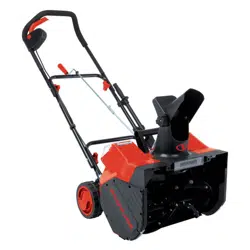Loading ...
Loading ...

3
Battery & Charger
Safety Instructions
We pay a great deal of attention to the design of every battery
pack to ensure that we supply you with batteries that are safe,
durable and have a high energy density. The battery cells have
a wide range of safety devices. Each individual cell is initially
formatted and its electrical characteristic curves are recorded.
This data is then used exclusively to be able to assemble the
best possible battery packs.
Despite all the safety precautions, caution must always be
exercised when handling batteries. The following points must
be obeyed at all times to ensure safe use. Safe use can only
be guaranteed if undamaged cells are used. Incorrect handling
of the battery pack can cause cell damage.
IMPORTANT! Analyses conrm that incorrect use and poor
care of high-performance batteries are the main factors
responsible for personal and/or product damage.
mWARNING! Read all safety warnings and instructions.
Failure to follow the warnings and instructions may
result in electric shock, re and/or serious injury
mWARNING! Use only approved replacement batteries;
other batteries may damage the snow blower and cause it to
malfunction.
mCAUTION! To reduce the risk of injury, charge the
iON+ 24V lithium-ion battery packs only in their designated
iON+ 24V lithium-ion charger. Other types of chargers present
risk of re, personal injury and damage. Do not wire a battery
pack to a power supply plug or car cigarette lighter. Such
misuse will permanently disable or damage the battery pack.
• Avoid dangerous environments – Do not charge the
battery pack in rain, snow or in damp or wet locations.
Do not use the battery pack or charger in the presence of
explosive atmospheres (gaseous fumes, dust or ammable
materials) because sparks may be generated when inserting
or removing the battery pack, which could lead to a re.
• Charge in a well-ventilated area – Do not block the
charger vents. Keep them clear to allow for proper
ventilation. Do not allow smoking or open ames near a
charging battery pack. Vented gases may explode.
NOTE: The safe temperature range for the battery is
-4°F – 113ºF (-20°C – 45°C). Do not charge the battery
outside in freezing weather; charge it at room temperature.
• Maintain charger cord – When unplugging the charger,
pull the plug, not the cord, from the receptacle to reduce
the risk of damage to the electrical plug and cord.
Never carry the charger by its cord or yank it by the cord
to disconnect it from the receptacle. Keep the cord away
from heat, oil and sharp edges. Make sure the cord will not
be stepped on, tripped over or subjected to damage or
stress when the charger is in use. Do not use the charger
with a damaged cord or plug. Replace a damaged charger
immediately.
• Do not use an extension cord unless it is absolutely
necessary – Using the wrong, damaged or improperly
wired extension cord poses a risk of re and electric shock.
If an extension cord must be used, plug the charger into a
properly wired 16 gauge or larger extension cord with the
female plug matching the male plug on the charger. Make
sure that the extension cord is in good electrical condition.
• Charger 24VCHRG-DPC is rated for 120 volt AC only –
The charger must be plugged into an appropriate
receptacle.
• Use only recommended attachments – Use of an
attachment not recommended or sold by the battery
charger or battery pack manufacturer may result in risk of
re, electric shock or personal injury.
• Unplug charger when not in use – Make sure to remove
battery packs from unplugged chargers.
mWARNING! To reduce the risk of electric shock,
always unplug the charger before performing any cleaning
or maintenance. Do not allow water to ow into the charger.
Use a Ground Fault Circuit Interrupter (GFCI) to reduce shock
hazards.
• Do not burn or incinerate battery packs – Battery packs
may explode, causing personal injury or damage.
Toxic fumes and materials are created when battery packs
are burned.
• Do not crush, drop or damage battery packs – Do not
use the battery pack or charger if they have sustained a
sharp blow, been dropped, run over or have been damaged
in any way (i.e. pierced with a nail, hit with a hammer,
stepped on, etc.).
• Disconnect the battery pack from the appliance before
making any adjustments, changing accessories,
or storing appliance – Such preventive safety measures
reduce the risk of starting the appliance accidentally.
• Avoid unintentional starting – Make sure the safety switch
and the switch lever are in the o position before inserting
the battery in the unit. Do not carry the snow blower with
the safety switch and the ON/OFF trigger engaged.
• When battery pack is not in use, keep it away from other
metal objects – like paper clips, coins, keys, nails, screws
or other small metal objects that can make a connection
from one terminal to another. Shorting the battery terminals
together may cause burns or a re.
• Under abusive conditions, liquid may be ejected from
the battery; avoid contact – If contact accidentally
occurs, ush with water. If liquid contacts eyes, additionally
seek medical help. Liquid ejected from the battery may
cause irritation or burns.
• Do not use a battery pack or appliance that is damaged
ormodied–Damaged or modied batteries may exhibit
unpredictable behavior resulting in re, explosion or risk of
injury.
• Donotexposeabatterypackorappliancetoreor
excessive temperature – Exposure to re or temperature
above 130°C (265ºF) may cause explosion.
Loading ...
Loading ...
Loading ...
